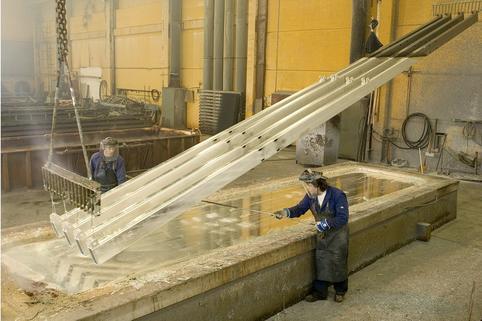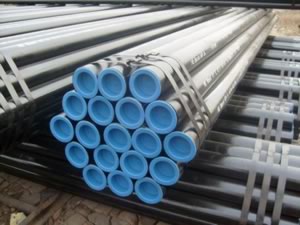These bars can be made out of a few different materials each of which contain different properties & thus are used for different purposes. Carbon Steels are usually used for Structural Shapes, Pipes, Plates & Tubing. High Strength Low Alloy steels are used for the same as Carbon but also W Shapes. Corrosion Resistant High Strength is only used for Structural Shapes & plates whereas Quenched & Tempered Alloy Steels are used for Structural Plates, Plates & Boilers & Pressure Valves.
Angle Steel Bars are a kind of structural steel which are L formed. Other forms include the T beam, Z shape, Channel, T formed, Bar, Rod, Plate, & Asymmetrical I Beams.
The Thermal Properties of Steel vary depending on the composition of the Alloy, i.e. the substances other than iron that are used to form the steel. The Autenizing temperature which is the temperature at which the steel becomes a crystal structure is used to compare different alloys. Pure Iron has an Autenizing temperature of 900 Centigrade, Eutectic is far lower, this has less than 1% Carbon & when more carbon is added, this temperature will increase again. When the Carbon levels are above two.1%, the name of the substance is no longer steel but Cast Iron.
The composition of the steel involved also changes the properties of the material. Often coatings are applied to steel to try to increase the Critical Temperature which is the temperature in which the steel is unable to bear its load. This is important in cases of fires where injuries to persons or items may happen as the steel will no longer be able to provide the mechanical strength.
There's a few makes use of for Angled Steel & they are usually Structural, the steel helps provide a force to hold items in place. Therefore it is imperative that the angle produced is so exact & various calculations are used to make positive that this is the case. There's lots of different companies obtainable which can offer specialised cutting allowing the exact size & angle to be formed for different needs.
There's number of ways in which Steel can be twisted including Press Brake Forming, Point Bending, Folding, Wiping, Rotary Bending, Elastomer Bending & Running. There's types of Press Brake Forming & these are Air Bending, Bottoming & Coining & in all of these a punch provides the force necessary for bending the steel.
Angle Steel Bars are a kind of structural steel which are L formed. Other forms include the T beam, Z shape, Channel, T formed, Bar, Rod, Plate, & Asymmetrical I Beams.
The Thermal Properties of Steel vary depending on the composition of the Alloy, i.e. the substances other than iron that are used to form the steel. The Autenizing temperature which is the temperature at which the steel becomes a crystal structure is used to compare different alloys. Pure Iron has an Autenizing temperature of 900 Centigrade, Eutectic is far lower, this has less than 1% Carbon & when more carbon is added, this temperature will increase again. When the Carbon levels are above two.1%, the name of the substance is no longer steel but Cast Iron.
The composition of the steel involved also changes the properties of the material. Often coatings are applied to steel to try to increase the Critical Temperature which is the temperature in which the steel is unable to bear its load. This is important in cases of fires where injuries to persons or items may happen as the steel will no longer be able to provide the mechanical strength.
There's a few makes use of for Angled Steel & they are usually Structural, the steel helps provide a force to hold items in place. Therefore it is imperative that the angle produced is so exact & various calculations are used to make positive that this is the case. There's lots of different companies obtainable which can offer specialised cutting allowing the exact size & angle to be formed for different needs.
There's number of ways in which Steel can be twisted including Press Brake Forming, Point Bending, Folding, Wiping, Rotary Bending, Elastomer Bending & Running. There's types of Press Brake Forming & these are Air Bending, Bottoming & Coining & in all of these a punch provides the force necessary for bending the steel.












